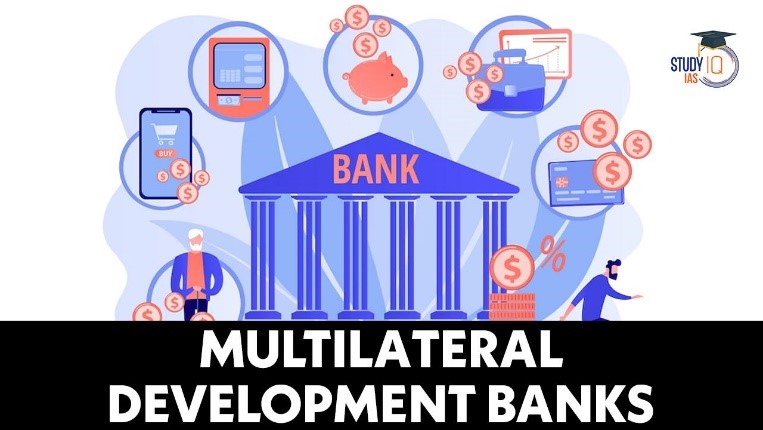Description

Disclaimer: Copyright infringement not intended.
Context
- Reforms have been proposed for World Bank, other Multilateral Development Banks.
Multilateral Institutions: Reforms needed: https://www.iasgyan.in/rstv/multilateral-institutions-need-for-reforms
What are Multilateral Development Banks?
- Multilateral Development Banks are institutions whose members include multiple developed and developing countries.
- The banks have to fulfil certain lending obligations to facilitate developmental objectives.
- They provide financing and technical assistance to countries and organizations undertaking projects across sectors including transport, energy, urban infrastructure, and waste management.
- Usually, developed countries in MDBs contribute to the lending pool while developing countries primarily borrow from these institutions to fund development projects.
Why are experts advocating for reforms within MDBs?
- The G20 expert group cites the climate crisis to argue that while stakeholders worldwide know what needs to be done to mitigate it, they “lack mechanisms to make this happen on a global scale, especially in emerging markets and developing economies (EMDEs).”
- According to the expert group, a reformed MDB ecosystem can equip stakeholders to better deal with global challenges in effective ways.
- It has recommended that MDBs operate more in sync with the developmental priorities of individual nations.
- Additionally, the expert group called for bringing private sector engagement to the centre of MDB operations by breaking away from the culture of limited operational interaction between their private and sovereign financing arms.
- In the group’s view, greater coordination between multiple stakeholders is crucial to the success of MDBs.
- To mitigate coordination failures, the expert group has called for greater involvement of national governments to develop “a home-grown unified vision of goals, policies, investments and financing.”
- These recommended reforms are to “help address multiple coordination failures among domestic and international stakeholders, public and private.”
- The expert group also notes that the existing perception and practices of MDBs have adversely impacted their engagement with the private sector.
- MDBs are often seen as bureaucratic and risk averse, which deters the private sector from being more involved in assisting with financing.
- Given that MDBs need to ramp up financing to $390 billion by 2030, the private sector can play a pivotal role in making that happen by reversing the current trend of “disappointingly low” private financial flows to EMDEs.
- As per the group, the private sector’s involvement depends on “MDBs embracing partnerships with the private sector, taking on more risk – especially credit risk and policy risk – and then managing it properly.”

How have Multilateral Development Banks traditionally lent in countries such as India?
- MDBs have played a crucial role in India’s development journey by financing key infrastructure projects with longer gestation periods.
- The World Bank, established in 1944, has committed to lending worth $97.6 billion in India, including all active and closed projects.
- Of the total commitments, $18.7 billion (19 per cent) have been committed to projects in the public administration sector, $14.8 billion (15 per cent) to the agriculture, fishing and forestry sector, and $10.6 billion (11 per cent) to the transport sector.
- The Manila-based Asian Development Bank, formed in 1969, has cumulatively committed to assistance worth $59.7 billion in India for project and technical assistance.
- Of the total assistance, $20.2 billion (34 per cent) has been committed to the transport sector, $15 billion (25 per cent) to the energy sector, and $6.7 billion (10 per cent) to the urban infrastructure sector.
- Of the $2 billion it committed in 2022, $1.8 billion was committed to sovereign projects, for which the loan amount is guaranteed by either the central, state, or local government(s), and just $0.2 billion to non-sovereign projects.
- The Beijing-headquartered Asian Infrastructure Investment Bank (AIIB), which was formed in 2016, has approved financing worth $9.9 billion in India. Of this, $4.2 billion (42 per cent) has been approved for the transport sector, $1.4 billion (14 percent) for the energy sector, and $1.25 billion (12.6 per cent) for economic resilience.

Multilateral Institutions: Reforms needed: https://www.iasgyan.in/rstv/multilateral-institutions-need-for-reforms
|
PRACTICE QUESTION
Q. How have Multilateral Development Banks traditionally lent in countries such as India? What reforms have been suggested for Multilateral Development Banks?
|












